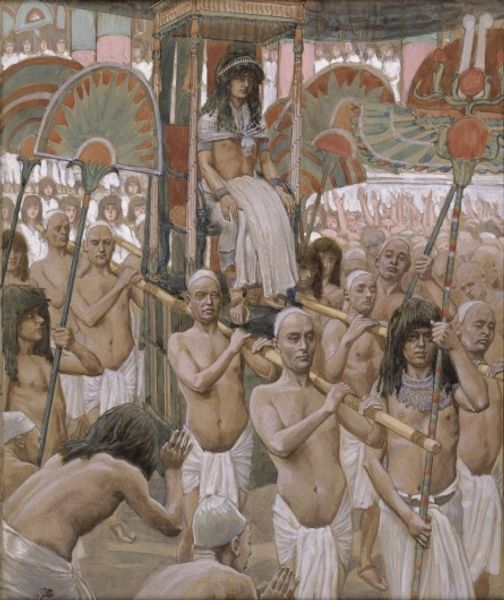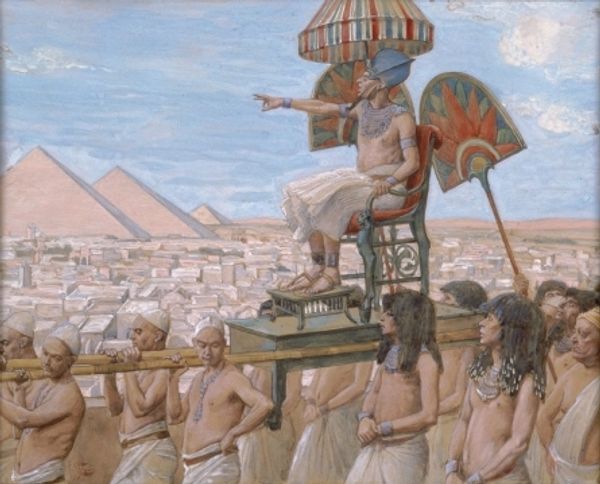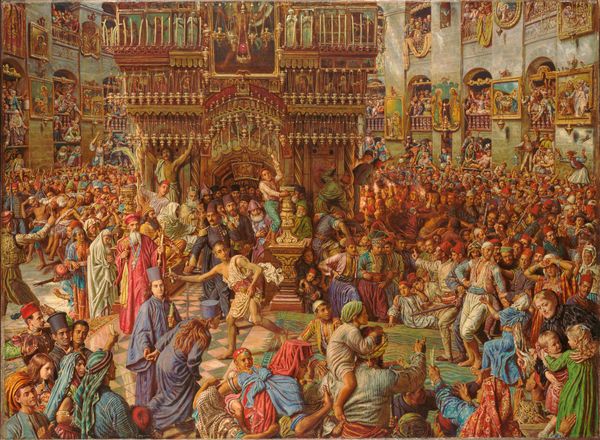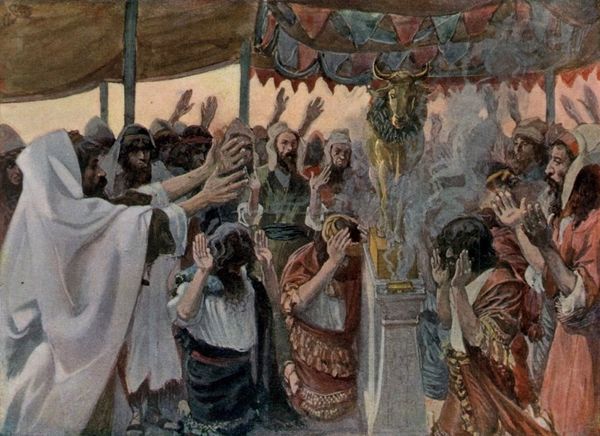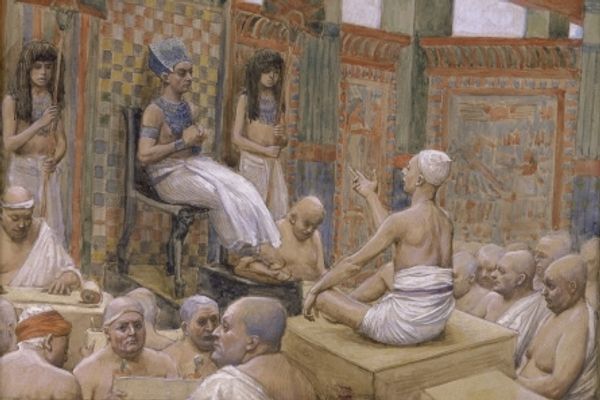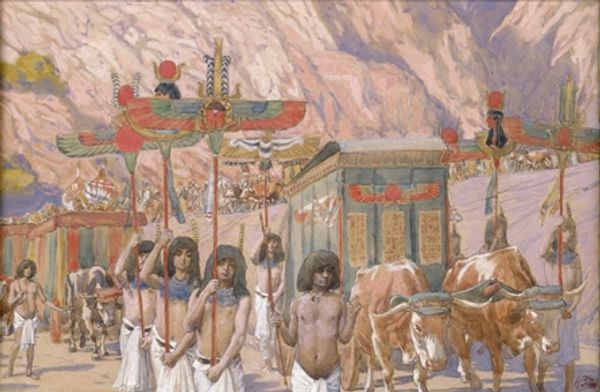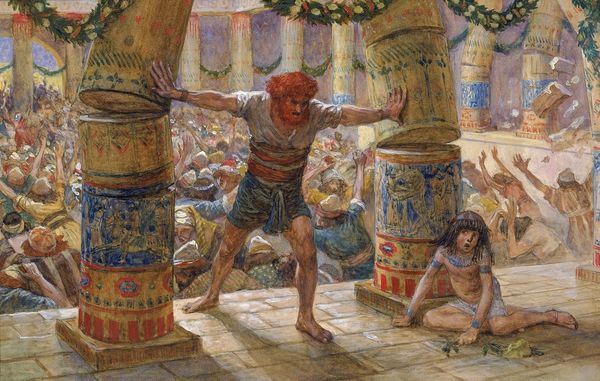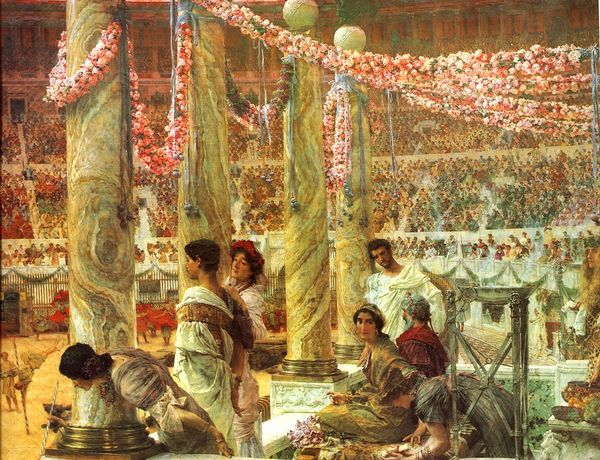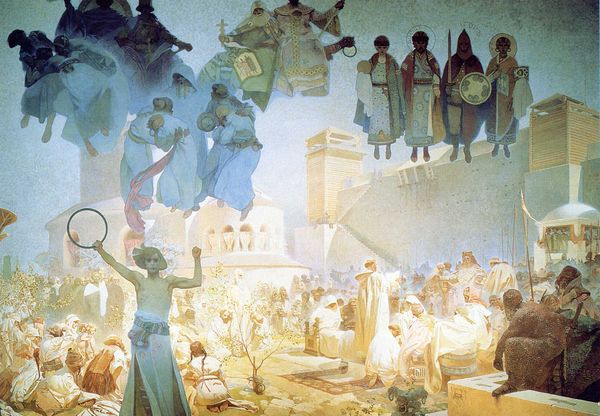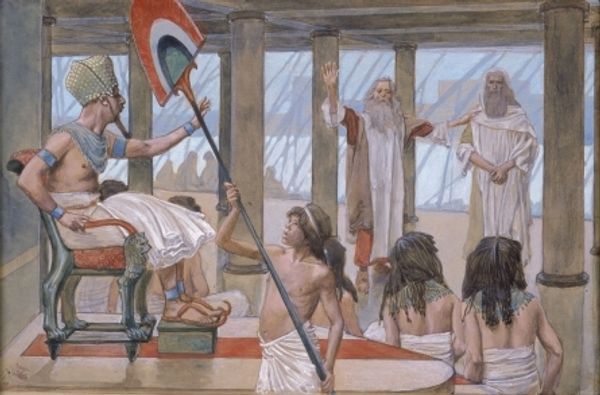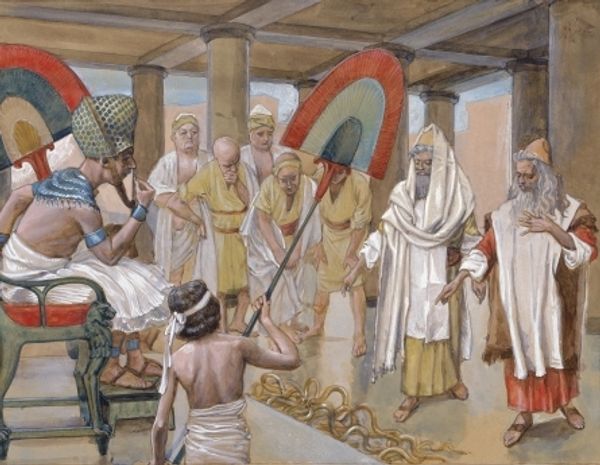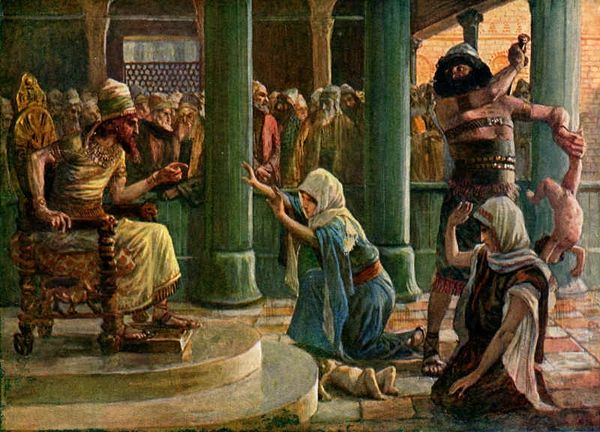
tempera, painting, oil-paint
#
narrative-art
#
tempera
#
painting
#
oil-paint
#
ancient-egyptian-art
#
perspective
#
painted
#
figuration
#
oil painting
#
ancient-mediterranean
#
group-portraits
#
orientalism
#
genre-painting
#
history-painting
#
academic-art
Copyright: Public Domain: Artvee
James Tissot painted "Joseph Dwelleth in Egypt" in watercolor, a medium often associated with illustration and preparatory sketches, rather than high art. Yet, Tissot employs watercolor to powerful effect here, capturing a grand biblical scene with delicate washes of color. The choice of medium allows for a certain luminosity, enhancing the opulence of the scene, where Joseph is depicted as a Pharaoh-like figure. But it’s impossible to ignore the contrast: Joseph, elevated on his throne, is attended by laborers, their bodies rendered in a spectrum of earth tones. Their labor literally supports Joseph's elevated status, and by extension, the entire Egyptian court. Tissot’s decision to use watercolor emphasizes the contrast between the grand subject matter and the modest materials, prompting us to consider the social implications of wealth and power depicted in the painting. This challenges traditional distinctions between fine art and craft, inviting us to appreciate the complex relationship between materials, making, and context in understanding the work's meaning.
Comments
No comments
Be the first to comment and join the conversation on the ultimate creative platform.
